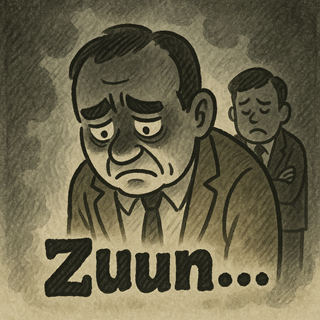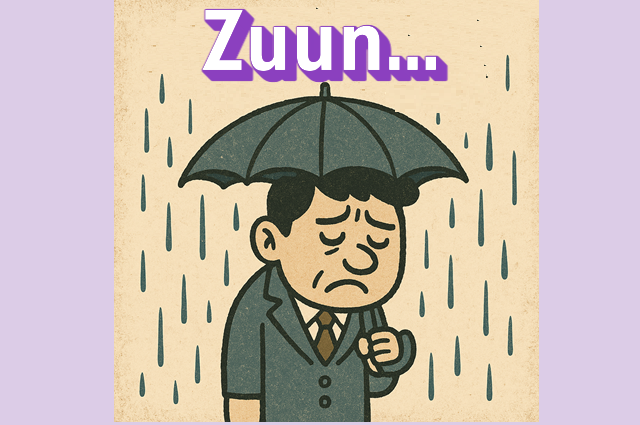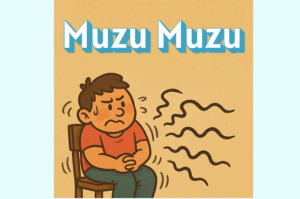Ever felt your heart sink after bad news?
Or a heavy silence hanging in the air after a mistake?
That’s when you can feel “Zuun” (ずーん) — the sound of heaviness inside.
Before we dive in, hear what it sounds like!
What is “Zuun” (ずーん)?
“Zuun” doesn’t describe an actual sound,
but the feeling of emotional heaviness, shock, or disappointment.
Used for:
- Feeling depressed or downhearted
- A heavy silence
- A sinking or dropping sensation (emotionally or physically)
Nuance:
Heavy, low, motionless — like the air after a thunderclap.
Example:
After hearing the result,
his heart sank —
zuun…
Pronunciation
zoon
(low, slow, and deep — say it from your chest)
Categories
Emotion / Feeling
What Does “Zuun” Look Like?
It looks like:
The weight of regret pressing down
A dark cloud hanging over someone
Shoulders drooping

How Do You Say It?
Say it slowly, letting the weight sink in:
Zuun…
Like the sound of a heavy mood pressing down,
or your heart dropping after bad news —
Zuun…
Examples in Daily Life
Example 1: After bad news
He stared at the screen —
his heart sank,
zuun…

Example 2: Quiet regret
No one spoke.
The air felt heavy —
zuun…

Cultural Note
In Japanese, emotional onomatopoeia like “zuun” express inner feelings directly.
In English, you might say:
“It hit me hard.”
But “zuun” makes it audible — it’s the sound of emotional gravity.
“My heart sank.”
Watch & Feel the “Zuun” World!
Feel the “Zuun” — Feeling depressed
Try Using It!
When you feel emotionally heavy,
when silence fills the room after a shock —
say it quietly:
Zuun…












Comments